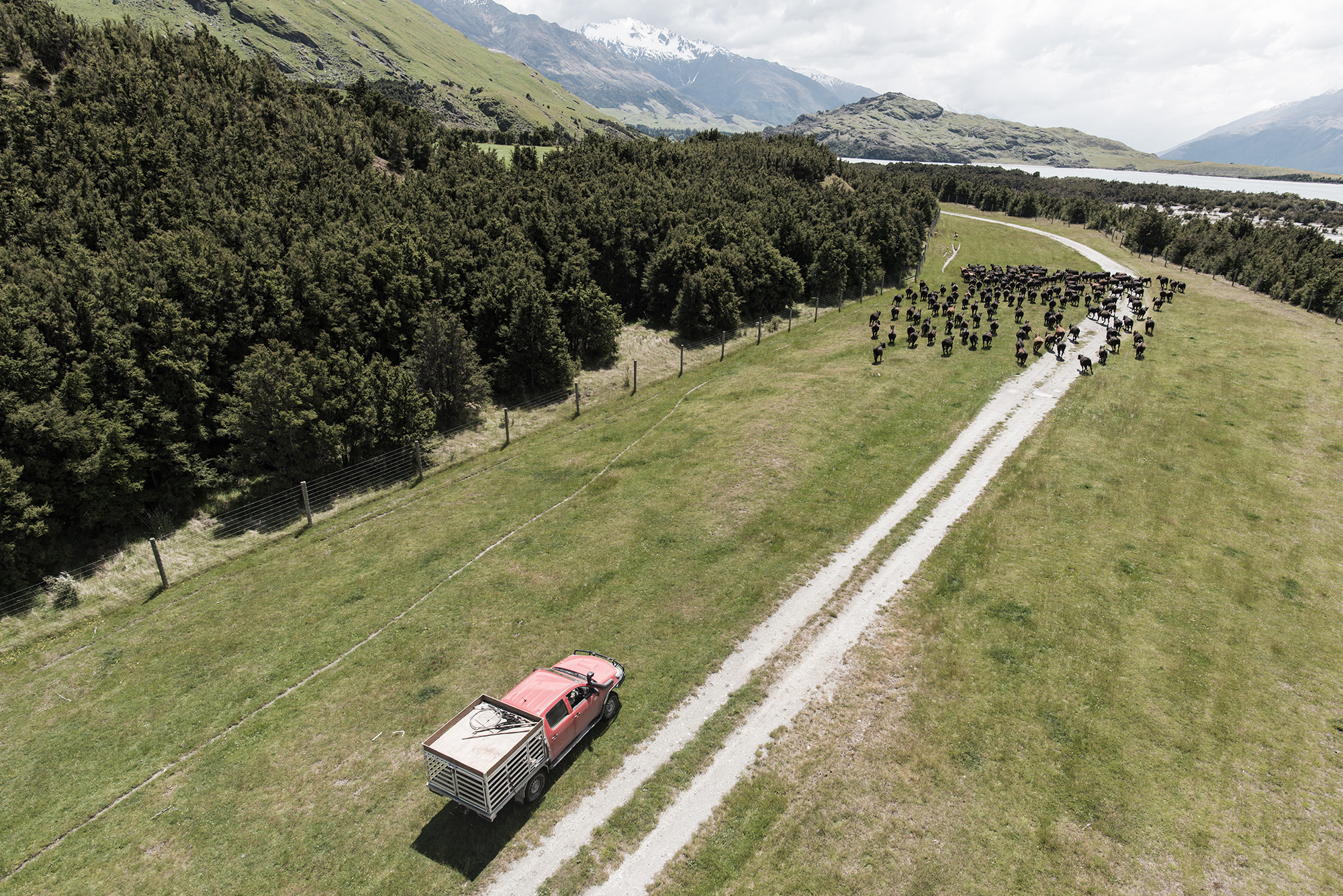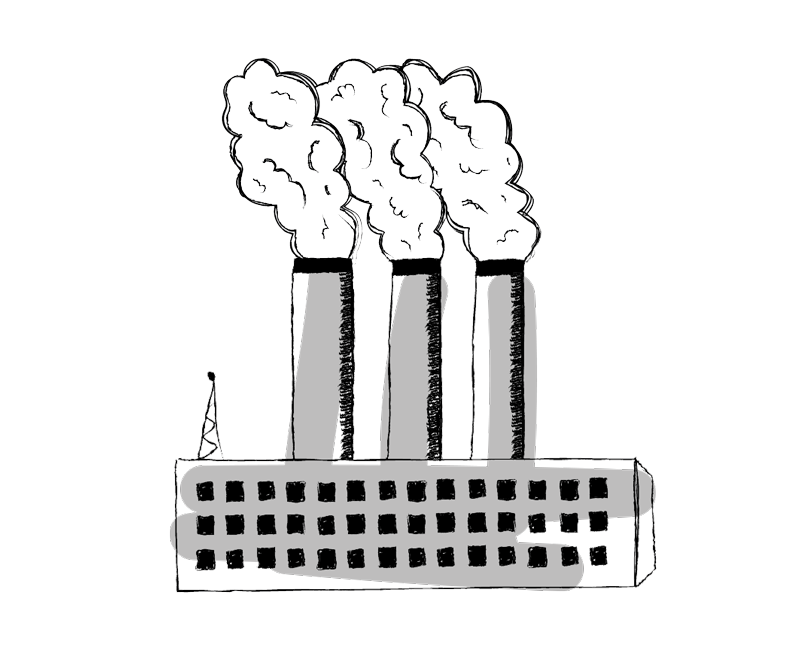 ” floaterposition=”center” floaterdirection=”none”]
” floaterposition=”center” floaterdirection=”none”]
Strategic considerations in moving New Zealand to a low-emissions pathway
New Zealand’s national circumstances create a particular set of challenges when moving to a low-emissions pathway. New Zealand’s emission per capita and per unit GDP have fallen since 1990 but remain high by international standards. This is due to unusually high emissions from agriculture and high transport emissions intensities. Two characteristics in particular have an important bearing on when, how, and to what extent New Zealand might reduce its emissions:
- New Zealand benefits from abundant and diverse sources of low-carbon energy. Hydro, geothermal and, to a lesser extent, wind, solar and biomass resources are already being effectively deployed to deliver low-carbon electricity. Collectively, these account for around 80 per cent of electricity generation. By contrast, the OECD average is 24 per cent (IEA 2015).
- As a proportion of gross emissions, New Zealand’s biological emissions from agriculture are the highest among developed countries, at around 50 per cent of gross emissions. This is twice the OECD average (OECD 2015). Forestry, however, represents a significant carbon sink, sequestering about 30 per cent of gross emissions. Collectively, although agriculture and forestry account for a relatively small share of GDP – New Zealand, like other developed economies, is a predominantly service-sector economy – the products from these sectors account for around 70 per cent of the country’s merchandise exports (Statistics New Zealand 2016; New Zealand Ministry for Primary Industries 2016).
Despite these distinctive characteristics, there are abundant opportunities for New Zealand to reduce its emissions, spanning all sectors of the economy and requiring action by all firms and households. The discussion below outlines some of the key strategic opportunities that exist, and highlights how, in many cases, these opportunities will deliver further benefits to the New Zealand economy and/or the quality of life of New Zealand’s citizens.
Energy sector emissions
The UN’s Deep Decarbonisation Pathways Project identified a common approach for reducing energy sector emissions – efficiency, decarbonisation (of electricity supply) and electrification (Deep Decarbonisation Pathways Project 2014). This also applies to New Zealand; however, because the country already has such a low-emissions electricity network, the approach is likely to be easier and more cost-effective than in many other countries. In turn, this provides the country with an opportunity to attract globally mobile energy-intensive industries in a world facing increasingly stringent emission constraints
Efficiency
There are multiple opportunities for low-cost energy efficiency across all sectors in the New Zealand economy:
Buildings
Improvements in the insulation of existing homes and highly insulated new building stock.
Industry
As a major user of fossil-fuel-based energy, industry offers one of the largest opportunities for energy efficiency.
Transport
The fuel economy of New Zealand’s transport fleet is poor compared with other developed countries. Moderating the expected growth in demand for car travel, especially in urban areas through increased cycling, walking and efficient urban design, could lead to further gains.
Crucially, these opportunities are likely to be low-cost and to generate substantial co-benefits. International studies show that energy efficiency is often one of the lowest-cost ways to reduce emissions, sometimes bringing financial savings. This is corroborated by New Zealand evidence. It is also likely to deliver co-benefits for health from warmer homes, leading to fewer hospital visits and reduced sick leave. The ICE produces numerous tailpipe emissions which have detrimental, and sometimes severe, health impacts. More efficient transport modes would reduce these impacts.
A wealth of evidence demonstrates that a suite of policies are needed to unlock energy efficiency potential. While a strong and robust emissions price is an indispensable component of unlocking energy efficiency, it is not sufficient. A host of barriers (market failures) can block people and firms from undertaking beneficial energy efficiency investments. These include difficulties in accessing finance, landlord–tenant problems (where the benefits from energy efficiency flow to one person but the costs are borne by another), difficulties in accessing information, and systematic behavioural biases. To tackle this suite of barriers, policymakers need a coherent suite of responses. In New Zealand, some of the biggest gaps in the policy suite appear to relate to new buildings, efficiency standards for the transport fleet, and improvements in the use of heat in industry.
Decarbonisation
There is scope for New Zealand to further decarbonise its electricity supply. Renewables already provide the lowest-cost source of electricity in New Zealand. There are plentiful renewable resources to accommodate the likely increase in electricity demand (see below), and the country’s liberalised and flexible market provides appropriate pricing signals to develop this capacity as needed.
The key challenge for New Zealand is to be able to cope with seasonal dry periods which will threaten its hydro resources.
[aesop_quote type=”pull” background=”#282828″ text=”#ffffff” align=”center” size=”1″ quote=”The country’s mix of renewable resources – especially geothermal and hydro – means that it does not face one of the most difficult decarbonisation problems faced by most other countries: how to keep the lights on when it is dark and the wind stops blowing. ” parallax=”off” direction=”left” revealfx=”off”]
This provides the country with a significant advantage. However, a prolonged dry period can still create challenges as water levels in reservoirs fall. Gas generation can ensure security of supply in these (relatively rare) cases. To accommodate this, market arrangements may need to be revised to maintain system reliability, including incentives for new low-emissions generation as well as investment in a portfolio of measures to provide system flexibility, including demand-side response, flexible gas plant and batteries. The development of this new capacity, and the accompanying changes in regulatory rules, would allow New Zealand’s remaining coal-fired generation to close.
Electrification
There is a significant opportunity for New Zealand to reduce its emissions through electrification of the passenger vehicle fleet. The transport sector accounts for the largest proportion of the country’s emissions from energy use. Improvements in the energy efficiency of existing vehicles, coupled with steady electrification of the vehicle fleet, would allow these emissions to be brought down substantially. Recent notable improvements in battery performance and cost suggest that this will be a lower-cost way of providing mobility than the ICE – potentially as soon as the 2020s. Moreover, it can help make New Zealand’s cities cleaner and quieter and, along with the right arrangements and incentives, can play a vital role in helping to manage and stabilise the grid. Heavy goods vehicles are more difficult to decarbonise due to weight and distance constraints, although there is some scope for shifting freight from road to rail and electrifying rail use.
The biggest barrier to the development of the electric vehicle fleet is the high fixed cost of developing a charging infrastructure. As with other networks, the financing and operation of such infrastructure might require public intervention, especially to prime the market in the early years. This is an area for urgent policy focus.
Extending low-emissions electricity to the heat sector is a major mitigation option. The key technologies for deployment in low-grade heating applications include efficient heat pumps and resistive heating technologies. International studies suggest that there is likely to be scope to roll these technologies out to the majority of the building stock. While there is already an increasing use of heat pumps in New Zealand, further work is required to generate accurate estimates of the country’s total potential. Where these technologies can be deployed, they are likely to be low and medium cost.
In medium-grade and industrial heating applications biomass from the forestry sector could be suitable, although cost varies depending on the specific application. Biomass could be used for applications with a high energy demand such as milk drying, although some upgrading of the biomass feedstock may be required in order to deliver heat to meet temperature and quality requirements. The management of transport costs and challenges in ensuring security of biomass supply have also been barriers to date.
Emissions from land
Addressing biological agricultural emissions is the most challenging issue for New Zealand’s low-emissions pathway planning. Almost half of New Zealand’s gross emissions are biological emissions from agriculture, the vast majority of which are from pastoral agriculture (New Zealand Ministry for the Environment 2016). While New Zealand’s energy sector represents a valuable asset in a low-emissions future, its high proportion of biological agriculture emissions might, if not managed carefully, represent a substantial liability. On the other hand, New Zealand has an opportunity to identify its strategic response in a way that most other countries will only come to consider in a few decades from now. Many of the mitigation options identified, such as targeted breeding programmes, require sustained effort over decades to have full effect. By starting this process now, New Zealand may be able to gain an edge over its competitors.
There are a number of options for reducing emissions from agriculture while maintaining current land-use patterns. Some of these options are available now, while others rely on technological developments that can be foreseen with more or less confidence:
Barriers to agricultural mitigation can be significant, although a combination of pricing and regulatory policies can unlock many options.
Agriculture is unusual in its production and emissions characteristics. Although there are global concerns about food security, emissions are often controlled by many diffuse agents that are often highly exposed to international competition. Moreover, mitigation options are often complex and highly context-specific, requiring in turn careful monitoring. The sector can also be subject to more generic mitigation barriers such as a lack of access to finance, institutional barriers and a lack of knowledge. Strategic policy can nonetheless unlock many abatement options. This will require price incentives for specific farm-based practices; continued support for R&D into emerging technologies; and support and regulatory action to address coordination problems.
However, a fundamental pivot point for New Zealand in deciding on low-emissions pathways is whether to significantly alter current land-use patterns. The extent to which these changes are made will have a fundamental bearing on New Zealand’s long-term emissions. However, questions of land use do not influence just emissions; they will have a significant bearing on other public policy issues of national significance, not least water quality and the vitality of the rural economy. They also raise important issues around emissions leakage, discussed further in Box 3.
The most obvious alternative land use is forestry; as well as reducing the quantity of emissions-intensive activity, this option would also allow sequestration of carbon emissions. Afforestation could consist of both plantation forestry (where most of the carbon is sequestered temporarily) – and reversion to native forestry (which would sequester carbon permanently but, except where native plantations such as manuka are developed, would tend to generate less economic value). There is plentiful land available for afforestation. Moreover, afforestation offers the opportunity to reduce erosion, improve water quality, and generate a domestic bioenergy resource. However, there is considerable, and understandable, public concern about the social and environmental consequences of a significant afforestation programme, especially if focused on plantation forestry. These concerns relate to both the potentially difficult transition away from pastoral agriculture for rural economies, and a lost opportunity to reintroduce native habitat.
There are alternative rural land uses which would not lead to substantial sequestration but which may have fewer negative social and other environmental repercussions. Chief among these is horticulture: a highly profitable, high-growth industry which many New Zealand farmers are already pursuing as part of a risk-diversification strategy and to rotate soils. Horticulture export earnings have doubled in the 12 years to 2016 and the industry, including wine and flowers, is now worth NZ$5.5 billion (Horticulture New Zealand 2016). There could also be opportunities to increase the amount of land devoted to arable agriculture.
An emissions price signal would be an effective means to take account of the emissions intensity of the activity on the land. A significant determinant of land-use decisions is the underlying economic issue of which activities generate the most economic value. The extension of an emissions price to cover the biological emissions of the agriculture sector would help ensure that these decisions took account of the emissions costs of different land uses.
Box 3
Reducing emissions from the pastoral agriculture sector and other sectors with internationally traded products
In 2015, animal products accounted for 51 per cent of New Zealand’s merchandise exports by revenue (Statistics New Zealand 2015). This was the country’s most valuable category of exports, accounting for five times more value than the next most important export category (forest products). It indicates the sector’s strong exposure to international competition.
This raises concerns about the competitiveness implications of efforts to reduce emissions from pastoral agriculture. If emission reductions impose additional costs on farmers, the competitive position of New Zealand’s most successful export industry may be threatened, reducing domestic income and threatening employment.
However, agricultural practices can adjust to maintain agricultural profitability. First, alternative agricultural land uses might generate equivalent or greater value from the land: in the last 12 years, for instance, horticulture exports have grown faster than dairy exports. Studies also indicate that pursuing agricultural de-intensification – using fewer animals on the same quantity of land – can be an effective strategy to mitigate potential profit losses.
The same pressures also raise important questions regarding the global efficacy of policies that seek to reduce New Zealand’s emissions by changing its land use. Given constant or growing global demand for animal products, any decrease in pastoral agriculture land use in New Zealand would likely be offset by greater production elsewhere. This would substantially reduce the global emission reductions resulting from New Zealand’s actions. Indeed, it could potentially lead to an increase in global emissions, if the emissions intensity of production is higher elsewhere in the world.
However, in a world committed to the Paris Agreement, global patterns of food consumption and production could change dramatically. Most analysis of stabilising global temperature increases at 2°C or lower includes reducing losses and wastes in the supply chain; changing diets from animal products to plant-based food with equivalent protein content; and a reduction in over-consumption. Significant technological advances could also lead to the rapid development of low-cost synthetic milk and meat substitutes. Viewed from this perspective, the change in land-use patterns under these scenarios could be seen as an internally coherent strategy for building New Zealand’s economic resilience in a low-emissions world. It also need not compromise New Zealand’s long-run economic performance.
Emissions leakage concerns apply to other emissions-intensive sectors where products are traded internationally. In New Zealand, some of the most salient industrial sectors where this may be a concern include refineries, steel manufacturing and food processing. Again, in a world that is collectively committed to achieving the Paris Agreement goals, these concerns would be expected to diminish over time. In the short-to-medium term, when countries may make progress towards implementation of the Paris Agreement at different speeds, there is a growing body of evidence on how to design emission mitigation policies in a way that can help alleviate such concerns (Partnership for Market Readiness 2015).
Sustained emission reductions beyond 2050
Finding further opportunities for emission reductions beyond 2050 may be more challenging. Many of the lower-cost opportunities to reduce emissions will have been captured. Furthermore, while forests reduce emissions while they are growing, this sequestration falls towards zero as forests reach maturity. As such, while the challenging nature of New Zealand’s biological emissions profile means that forestry will need to play an important role in reducing emissions in the period to 2050, additional approaches will be necessary in order to reduce emissions in the second half of the century.
It is vital to begin laying the foundations for permanent emission reductions. The role of afforestation in reducing emissions in the first half of the twenty-first century is effectively a strategy that buys time to allow for new technologies to be developed and deployed in the second half of the century. It is difficult to predict what these technologies might be, although there is particular interest in those that deliver negative emission reductions, such as combining bioenergy with carbon capture and storage (BECCS) – which sequesters carbon dioxide from the atmosphere and then stores it underground – as well as direct air capture and carbon-storing materials (Committee on Climate Change (UK) 2016). Given the potential emissions liabilities New Zealand might store in its forest stocks in the next few decades, it will be important for the country to ensure that it places itself at the global frontier of understanding the scope and role of these technologies.








































Leave a comment